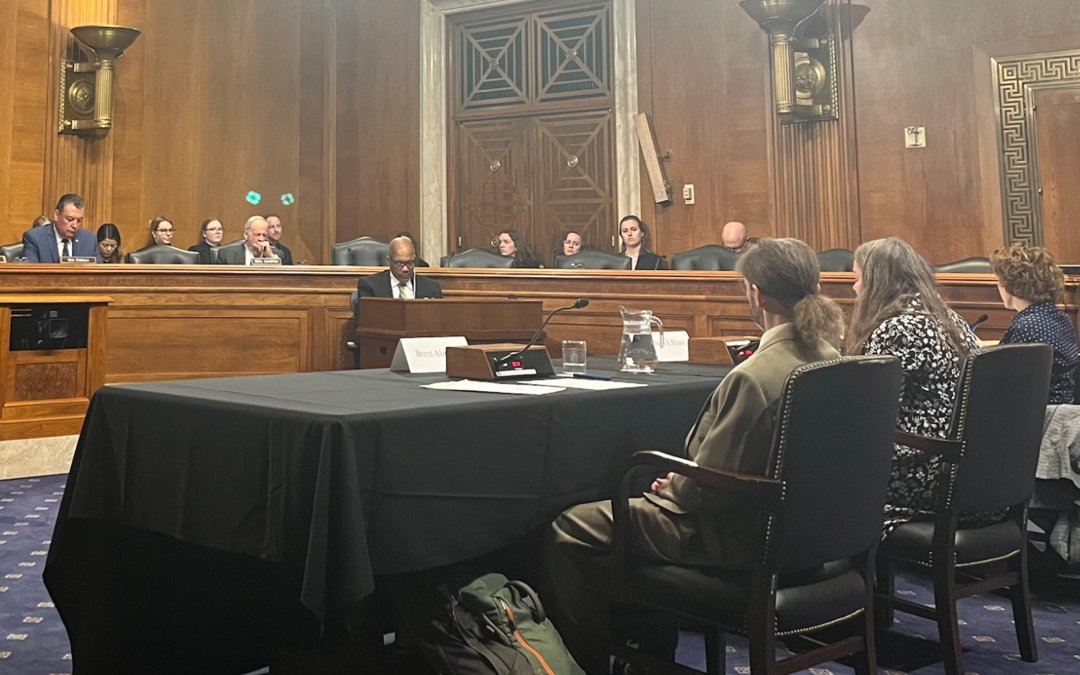WASHINGTON – Bipartisan concern about microplastics in the Senate brought about a rich discussion on Tuesday regarding future research and policy.
In a hearing focused on the presence of plastic particles in drinking water and wastewater, senators grappled with how they might take effective action even as expert witnesses told them research on the topic was still incomplete.
“While we don’t know everything, what we do know is concerning,” Director of Sustainability at the Penn State Erie campus Sherri Mason said, “and water, the necessary elixir of life, is a primary means for the movement of micro and nanoplastics into people.”
According to the World Health Organization (WHO), there are various ways microplastics can enter drinking water. The two most prominent ways are through surface run-off and sewage, according to a WHO information sheet.
Once inside the body, experts warn microplastics could have negative effects on the body.
According to the Environmental Protection Agency (EPA), the Clean Water Act (CWA) “establishes the basic structure for regulating discharges of pollutants into the waters of the United States and regulating quality standards for surface waters.”
But while the CWA created some standards when enacted in 1972, there is currently not a lot of policy surrounding microplastics due to their relative novelty.
Research around microplastics in the United States is still being collected, said Susanne Brander, a witness at Tuesday’s hearing who is an associate professor at Oregon State University. Most of the research to date had been conducted in Europe and Asia, but the U.S. can still use these findings, she said.
Nanoplastics, which are much smaller than microplastics, are even more difficult to identify. While microplastics are smaller than 0.5 millimeters in diameter, nanoplastics are just 0.000001 millimeters or less. Nanoplastics are invisible to the human eye.
Brent Alspach, vice president & director of applied research at Arcadis, said that because scientists don’t completely understand nanoplastics, policymakers cannot take meaningful action to remedy the issue yet.
But the research is lagging behind the effects, as plastics are being found in various locations, including human livers, lungs and breast milk, Sen. Jeff Merkley (D-Ore.) said.
“While drinking water in the U.S. does contain fewer microplastics in comparison to wastewater, the U.S. does have among the highest prevalence of microfibers in its drinking water and the highest number of particles detected per liter currently,” Brander said.
Sen. Cynthia Lummis (R-Wyo.) pointed out constituents are feeling concerned.
“Despite the large number of unknowns, there continues to be a considerable public interest in this topic,” Lummis said.
Brander, a researcher of microplastics, said one of the largest challenges with her work is that it is expensive to effectively test and track these plastics.
Indeed, microplastics are also disproportionately consumed by marginalized communities, making it a large environmental justice issue, Brander said.
Mason suggested working toward macro solutions. Cleanup is secondary to addressing the source of the problem, she said.
“When you are looking at a problem, you look as far upstream for a solution as you can. That’s where the real solutions are,” she said.
Sen. Sheldon Whitehouse (D-R.I.) was especially pleased with the discussion.
“This has been a very helpful and productive hearing,” he said. “I always appreciate it when a bipartisan panel can produce so much consensus and agreement on a particular issue.”


